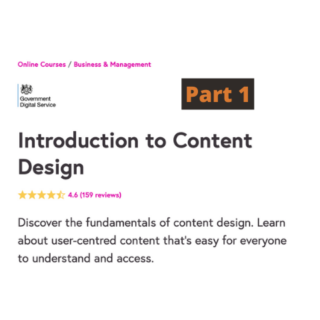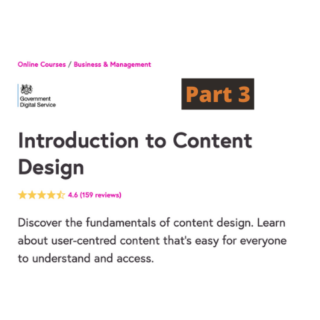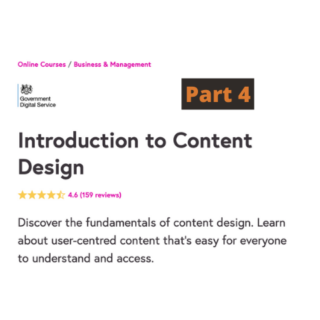Our Content Specialist, Ben, describes what he’s learnt about Designing for Accessibility in the GOV.UK Content Design course
Two weeks ago our content specialist, Ben embarked on his journey into learning more about content design. This week he learnt about designing for accessibility.
The course being taken is the Introduction to Content Design course being delivered by the Government Digital Service (GDS) on the FutureLearn course platform. This blog is part 1 of what he learned in his second week.
Why should we design for accessibility?
Being a content creator for HeX, and the person responsible for critiquing websites on their standard of accessibility provisions within their content, this is a question I’m familiar with.
Whilst I’m more than competent in my understanding of the principles of accessibility and why it’s important, I thought it would be insightful to understand more about how this course communicates that information.
I was not let down. The course highlights the need to be accessible for public sector organisations, quoting the accessibility regulations that came into force in 2018. But I was glad to see that the moral and social impact of accessibility was also highlighted.
How accessibility is defined in content design
Users who need to be considered when designing content
The course explained that 1 in 5 people in the UK have a disability and broke them down into the four categories of:
- Visual (blind/partially sighted)
- Hearing (Deaf/Hard of Hearing)
- Motor (Paralysis/Loss of limbs)
- Cognitive (affecting memory and thinking)
People starting out in accessibility, just as I was nearly 3 years ago now, tend to believe that accessibility simply focuses on the above categories. It was relieving to see that the course also focused on temporary disabilities such as:
- location (noisy area, sunny environment, slow Wi-FI),
- health (tiredness, recovering from a stroke or have a broken bone)
- equipment (old phone or older browser)
The course highlighted that all of these individuals, whether it was someone using older equipment, someone who was blind, or someone with Dyslexia, they would all need to be considered when creating content.
The standout advice from this was “All of your users may potentially have an accessibility need at one point in their life. Designing content in a way that helps them access it will make sure no one is excluded.”
The four principles of accessibility, and how they relate to content design
The course also touched on the four principles of accessibility:
- Perceivable
- Operable
- Understandable
- Robust
The explanations it gave for each, in relation to content was of particular use. It’s not something I’d directly considered before. Of course, when creating content, there is always a consideration of how it can be made the most accessible, I’ve never considered how each accessibility consideration relates back to the four main principles of accessibility:
Perceivable
This means that the content is available to at least one of their senses.
For example:
- If you’re a blind screen reader user, does the screen reader read the content correctly?
- If you’re Deaf and there’s audio, is there a text representation that can be read instead of listening?
Operable
This means that the content should be operated in the way it was intended. A service needs to work with the input device that someone is using.
For example:
- If you’re a keyboard user, can you tab through the content correctly?
- If you’re a voice navigation user, are you able to use voice to navigate through the content that is being displayed?
Understandable
This means that the content can be understood by the user. Whilst they may perceive the content, it may be difficult to understand.
For example:
- As a user on the autistic spectrum can you understand what is being referenced in the content?
- As a dyslexic user, is the content being displayed in a way that affects your ability to understand it?
Robust
This means building the content into a service or a page that can be accessed by whatever assistive technology someone is using
For example:
- As someone using an older browser, can you access the content on the site, and does it display properly?
- As someone using a screen reader, are you able to access all of the content on the page?



